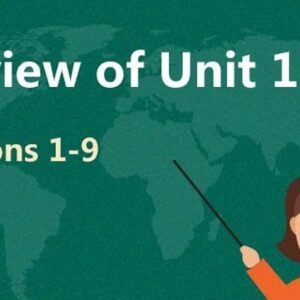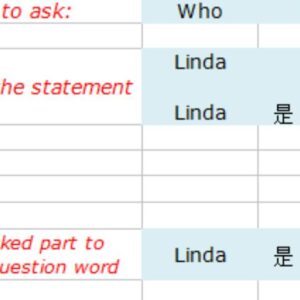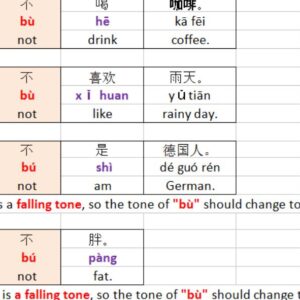In the past example, we figured out how to say the Chinese numbers from 1 to 99, and today how about we perceive how to request one’s telephone number.
Dialogue
| 1) |
A: |
刘 |
芳 |
, |
你 |
的 |
电 |
话 |
号 |
码 |
是 |
多 |
少 |
? |
|
|
liú |
fāng |
, |
nǐ |
de |
diàn |
huà |
hào |
mǎ |
shì |
duō |
shǎo |
? |
Liu Fang, what is your phone number? |
Listen |
|
|
B: |
我 |
的 |
电 |
话 |
号 |
码 |
是 |
8 |
8 |
6 |
4 |
2 |
5 |
1 |
0 |
。 |
|
|
wǒ |
de |
diàn |
huà |
hào |
mǎ |
shì |
bā |
bā |
liù |
sì |
èr |
wǔ |
yī |
líng |
。 |
My phone number is 88642510. |
Listen |
|
|
A: |
张 |
静 |
的 |
电 |
话 |
号 |
码 |
是 |
多 |
少 |
? |
|
|
zhāng |
jìng |
de |
diàn |
huà |
hào |
mǎ |
shì |
duō |
shǎo |
? |
What is Zhang Jing’s phone number? |
Listen |
|
|
B: |
她 |
的 |
电 |
话 |
号 |
码 |
是 |
5 |
3 |
6 |
4 |
8 |
9 |
2 |
7 |
。 |
|
|
Tā |
de |
diàn |
huà |
hào |
mǎ |
shì |
wǔ |
sān |
liù |
sì |
bā |
jiǔ |
èr |
qī |
。 |
Her phone number is 53648927. |
Listen |
|
| 2) |
A: |
你 |
好 |
, |
你 |
的 |
电 |
话 |
号 |
码 |
是 |
多 |
少 |
? |
|
|
nǐ |
hǎo |
, |
nǐ |
de |
diàn |
huà |
hào |
mǎ |
shì |
duō |
shǎo |
? |
Hello, what is your phone number? |
Listen |
|
|
B: |
我 |
的 |
电 |
话 |
号 |
码 |
是 |
1 |
3 |
7 |
5 |
1 |
3 |
1 |
8 |
0 |
7 |
9 |
, |
你 |
呢 |
? |
|
|
wǒ |
de |
diàn |
huà |
hào |
mǎ |
shì |
yāo |
sān |
qī |
wǔ |
yāo |
sān |
yāo |
bā |
líng |
qī |
jiǔ |
, |
Nǐ |
ne |
? |
My phone number is13751318079, and you? |
Listen |
|
|
A: |
我 |
的 |
电 |
话 |
号 |
码 |
是 |
1 |
5 |
8 |
9 |
1 |
1 |
6 |
0 |
5 |
2 |
1 |
。 |
|
|
wǒ |
de |
diàn |
huà |
hào |
mǎ |
shì |
yāo |
wǔ |
bā |
jiǔ |
yāo |
yāo |
liù |
líng |
wǔ |
èr |
yāo |
。 |
My phone number is 15891160521. |
Listen |
|
Vocabulary
| 电话 |
diàn huà |
n. phone |
|
| 号码 |
hào mǎ |
n. number |
|
| 多少 |
duō shǎo |
interrogative pronouns, how many or how much |
|
Expansion
| What is the Chinese emergency number? |
| China actually has two emergency numbers: the police emergency number is 110 and the other 120 is for first-aid. |
| Phone number |
Pīn yīn |
Notes |
| 110 |
yāo-yāo-líng |
police emergency number |
| 120 |
yāo-èr-líng |
first-aid phone number |
|
|
|
Grammar
| 1) Asking phone numbers with 多少 (duō shǎo) |
| 多少 (duō shǎo) means how many or how much in English, and it is a very common question word to use when asking about the phone number, amounts or prices in Chinese.
For example:
|
| To ask for phone numbers: |
你的电话号码是多少? |
| nǐ de diàn huà hào mǎ shì duō shǎo? |
| (lit.) Your phone number is how many? |
| To ask for amounts: |
多少人? |
| duō shǎo rén? |
| (lit.) How many people? |
| To ask for prices: |
多少钱? |
| duō shǎo qián? |
| (lit.) How much money? |
|
| Moreover, here you can change 电话号码 (diàn huà hào mǎ, phone number) to 手机号码 (shǒu jī hào mǎ, mobile number) to ask for one’s mobile phone number. |
| 你的手机号码是多少? |
| nǐ de shǒu jī hào mǎ shì duō shǎo? |
| (lit.) Your mobile phone number is how many? |
|
| 2) Using yāo to refer to 1 in a phone number |
| In order to avoid confusion of the pronunciation of yī (1) with qī (7) , especially when people are saying the number in a very nosiy environment, many Chinese people prefer to read 1 as yāo in a phone number (In most cases, 1 is still read as yī ). In fact, both yī and yāo are correct to use in a phon number, but yāo is more frequently-used nowadays in mainland China. |
| Phone number |
Pīn yīn |
| 576411881 |
wǔ qī liù sì yāo yāo bā bā yāo |
| 711631845 |
qī yāo yāo liù sān yāo bā sì wǔ |
|




